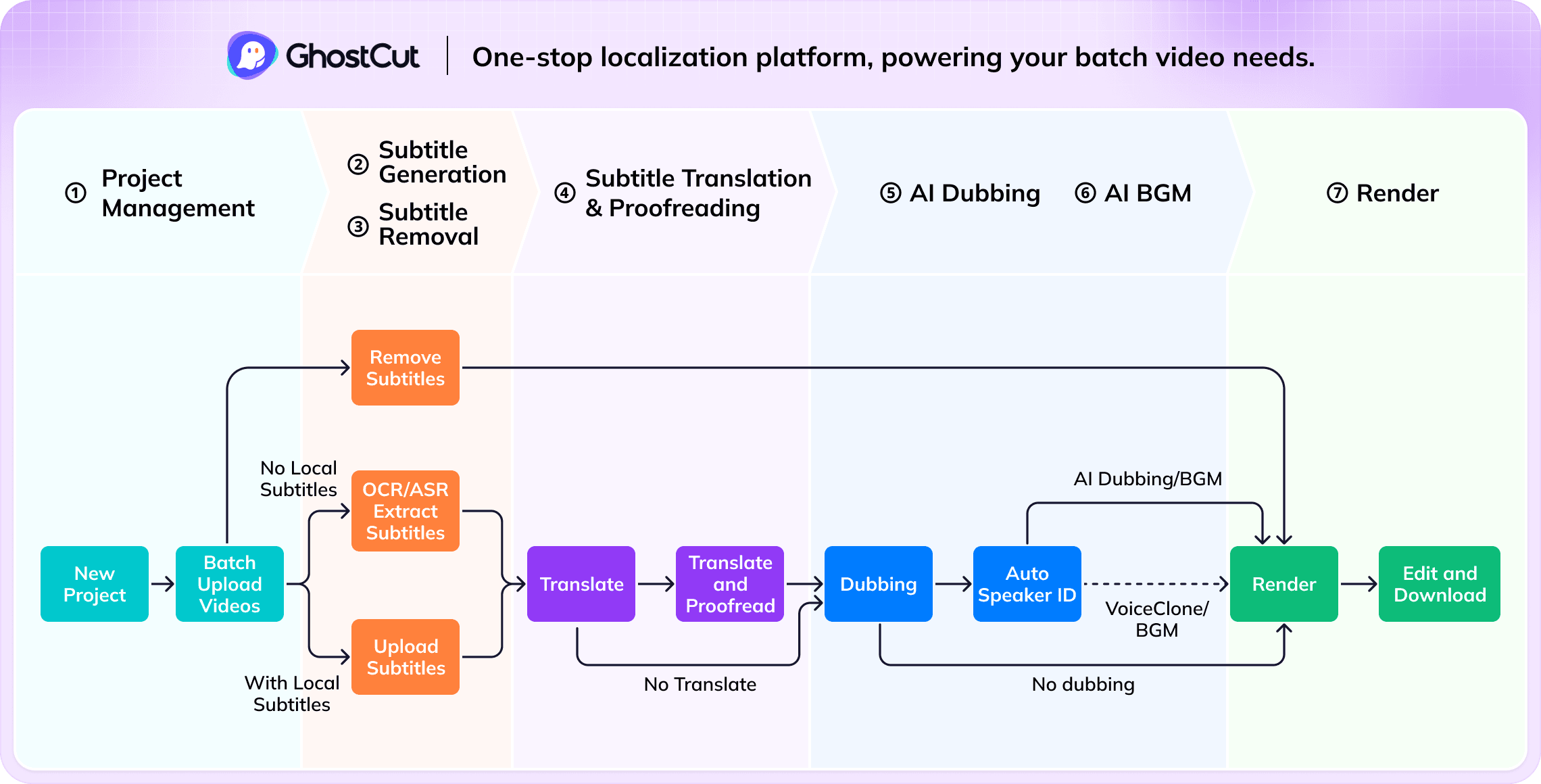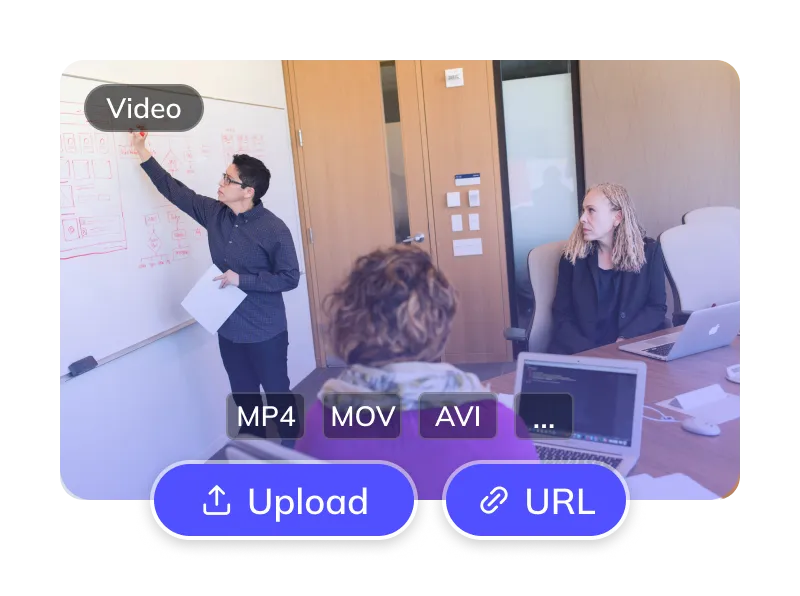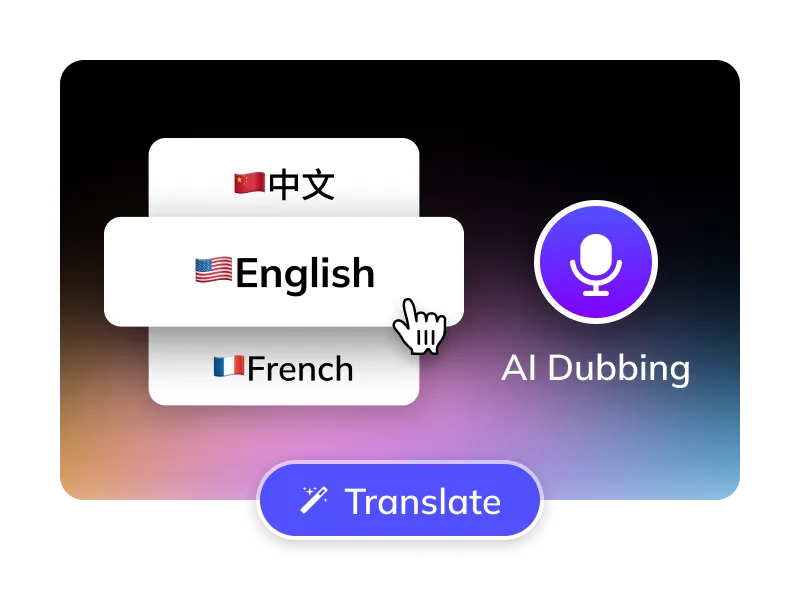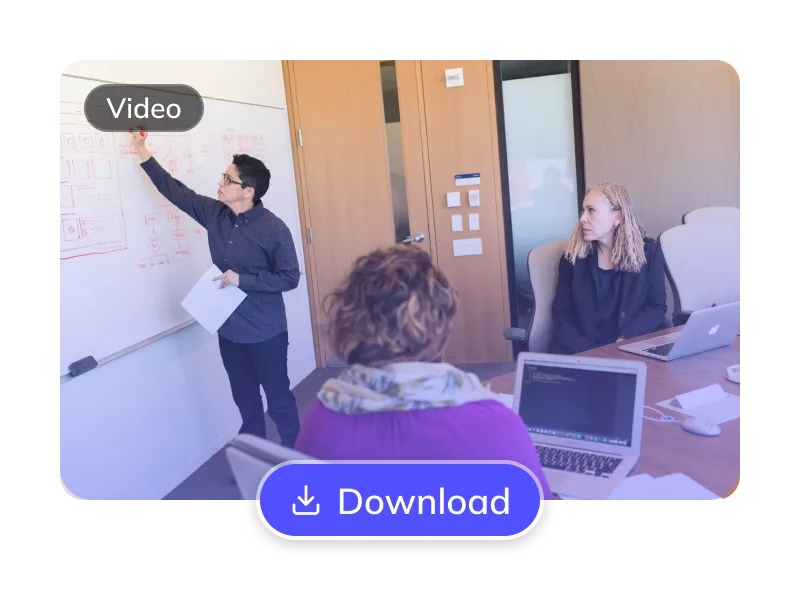How to Translate Arabic Videos to English ?
Translate Arabic Videos to Filipino in 3 Easy Steps
Trusted by 1,500,000+ Global Creators and Businesses
Why GhostCut for Your Video Translations?
GhostCut is your all-in-one AI solution for translating Arabic content into natural, engaging Filipino.
Effortless Project Management
Manage Arabic assets, subtitles, & Filipino videos. Batch process projects efficiently.
Pinpoint Filipino Accuracy
Up to 99.5% accurate. Optimized for Arabic-to-Filipino with LLM calibration & multi-agent review for culturally fluent Filipino translations.
Lifelike Filipino AI Dubbing
Choose from diverse, human-like Filipino AI voices (US/UK accents). Emotion-cloning technology captures original tone for natural Filipino delivery.
Flexible Arabic Subtitle Options
Optionally erase original Arabic hardsubs for a clean slate. Translate embedded Arabic subtitles directly.
Smart Multi-Speaker ID (Arabic)
AI detects multiple speakers in Arabic videos. Assign or clone distinct Filipino voices per character, with cross-episode consistency for complex Filipino dubs (dramas, interviews).
Efficient Batch Processing & API
Batch translate and dub 100s of Arabic videos to Filipino at once. Seamlessly integrate with our robust API.
Versatile BGM Control
Keep or mute original BGM. Our unique tech can also isolate sound effects, meeting diverse copyright and distribution needs.
Unbeatable Value
Flexible Arabic-to-Filipino plans. Try core features free. Automated pro service from just $0.1/minute.
Easy Online Access
No downloads. Instantly translate Arabic videos to Filipino online. Works on Windows, Mac, & major mobile browsers for cloud processing anywhere.
The GhostCut Edge: Unmatched Accuracy, Speed, and Value.
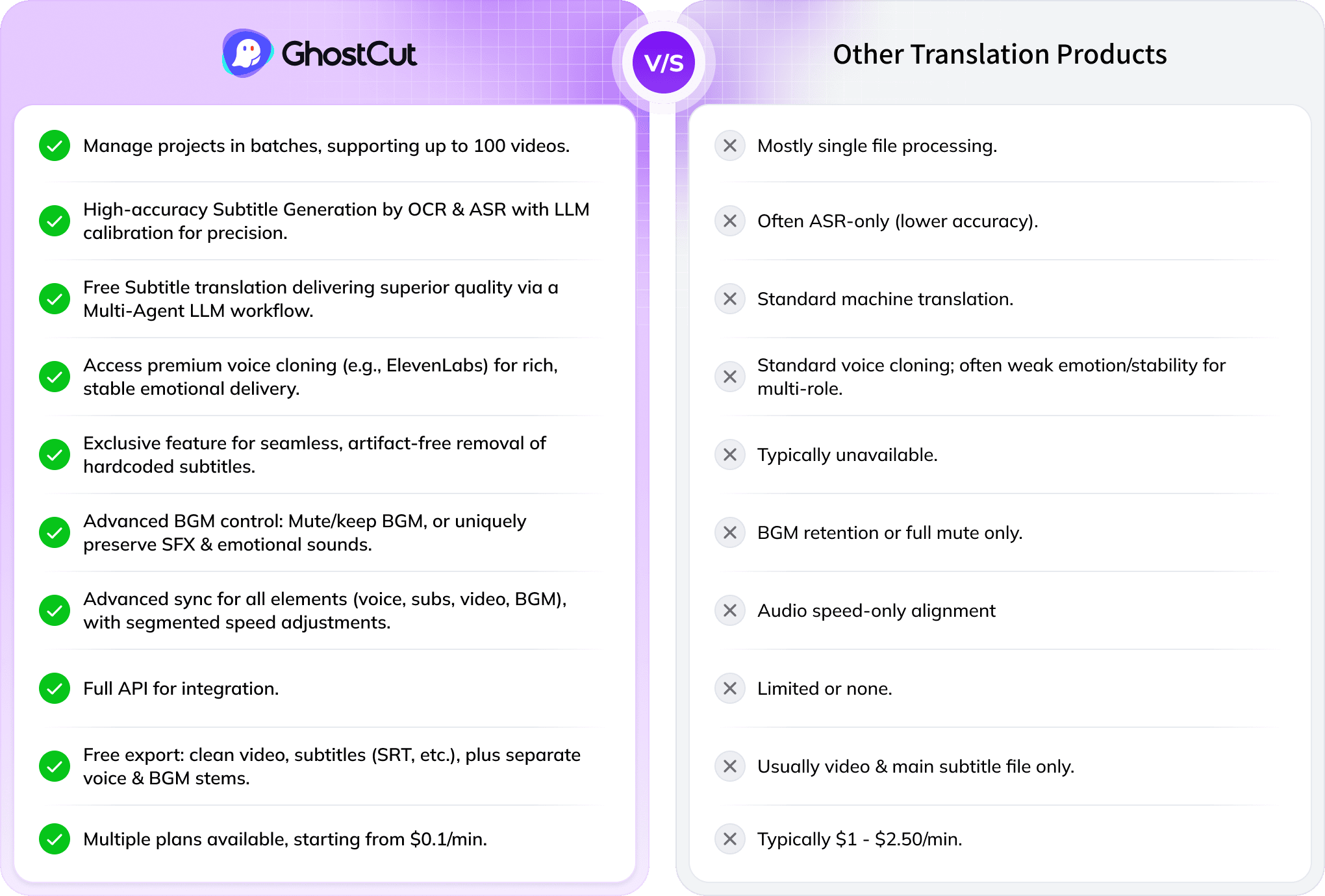
Every Algorithmic Optimization, Engineered for Quality Filipino Video
Mastering Long-Form Arabic Drama & Multi-Character Dubbing
Translating a 100-minute Arabic drama with 4000+ lines and many characters into Filipino is tough. Standard AI struggles to tell speakers apart, causing errors. GhostCut’s multi-modal AI (video, voice, text) excels in long-form, multi-speaker content, ensuring accurate, consistent character voices across entire series.
Translate Now

Seamless Filipino Dubbing & Perfect Lip-Sync
GhostCut ensures natural Filipino audio flow by treating related subtitles as whole ideas for TTS. It then precisely times new Filipino subtitles. Since Arabic-to-Filipino translation can change speech length, our AI expertly adjusts the new Filipino audio, subtitles, video, and BGM to maintain perfect sync, just like a seasoned editor.
Translate NowBoost ROI with Flawless Arabic Subtitle Removal
Original Arabic hardsubs can limit your video's global appeal. GhostCut’s AI doesn't just blur; it intelligently reconstructs the background obscured by Arabic subtitles, even complex ones, for a perfectly clean, high-quality visual. This means better viewer engagement, longer watch times, and higher ROI.
Translate Now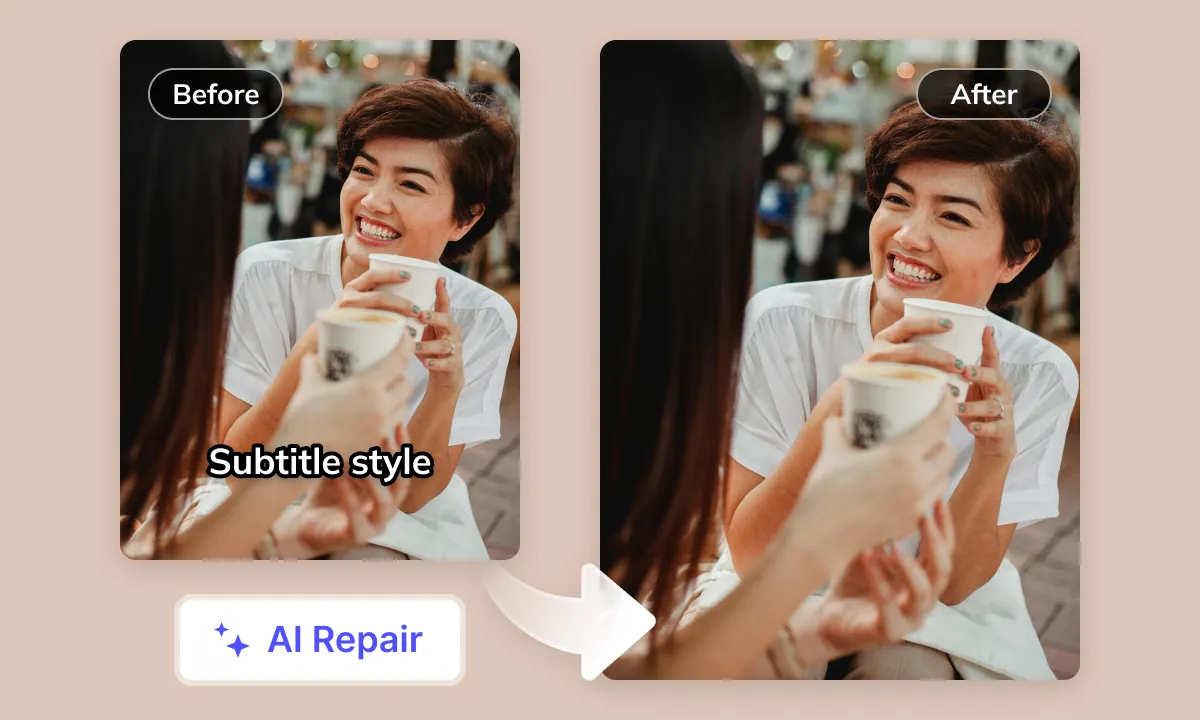

Smart Audio Control for YouTube Creators
Navigating BGM copyright on YouTube is tricky. GhostCut’s advanced audio separation isolates Arabic dialogue for translation, while intelligently managing BGM, sound effects, and even emotional expressions. Our "Keep SFX, Remove Music" option is a creator favorite for avoiding copyright issues without losing your video’s impact.
Translate NowBreaking Language Barriers: Reaching Philippine Audiences with Arabic Videos
Excellent Arabic videos in various fields struggle to reach Philippine audiences due to language barriers. Creators find it hard to overcome this on platforms like Facebook and YouTube. Poor Arabic-to-Filipino translationdubbing hinders user understanding and viewing experience, impacting engagement and cross-border reach. This drives an urgent market need for professional, efficient Arabic-to-Filipino AI video translation and dubbing
Arabic to Filipino Video Translation: Key Considerations and Challenges
Cross-Cultural and Linguistic Structural Differences
Arabic, a Semitic language, significantly differs from Filipino, an Austronesian language, in grammar, sentence structure, and tense expression. Translating from Arabic to Filipino requires extensive sentence reconstruction, as direct translation can be stiff and lead to misinterpretation. The core challenge lies in accurately conveying the deeper meaning of the original text
Writing Direction and Subtitle Layout
Arabic uses a right-to-left writing system, while Filipino uses a left-to-right Latin alphabet. This necessitates subtitle processing software and workflows that can seamlessly switch writing directions. Layout considerations must also account for Filipino word length and line-breaking rules to accommodate the reading habits of audiences from different cultural backgrounds
Translating Vocabulary, Idioms, and Cultural Nuances
Significant cultural differences exist between the Arab world and the Philippines regarding religion, customs, social etiquette, and everyday expressions. When translating Arabic-specific religious terms, local slang, cultural references, and idioms that lack direct literal equivalents, it is crucial to find appropriate localized expressions in Filipino to avoid information loss or cultural misunderstanding
Arabic Accent and Dialect Recognition
Arabic encompasses numerous regional dialects that vary significantly from Standard Arabic and from each other. This poses a challenge for AI speech recognition, requiring AI systems to possess the ability to identify different accents and dialects. Failure to do so will impact the accuracy of subsequent Arabic to Filipino translation
Subtitle Text Length and Reading Speed
Translating spoken Arabic content into Filipino subtitles may result in changes in text length. It is essential to condense sentences, segment them appropriately, and control the character count per line and display duration. This ensures Filipino audiences can read comfortably and comprehend the content in sync with the on-screen visuals
Lack of High-Quality Filipino AI Voices
Despite continuous advancements in AI voice technology, finding emotionally rich, naturally pronounced, contextually appropriate, and versatile Filipino AI voice options remains challenging. High-quality AI voiceovers are crucial for enhancing video viewing experience, but current selections may be limited
Lip-Syncing Difficulty with Original Video
Arabic and Filipino involve different mouth shapes and facial muscle movements during pronunciation. Achieving precise synchronization between Filipino voiceovers and the original Arabic video characters' lip movements is a complex technical task, requiring advanced lip-syncing technology
Ideal AI Translation Integration Workflow
An ideal AI Arabic to Filipino video translation workflow should encompass: high-accuracy Arabic speech recognition - culturally and contextually nuanced, authentic Filipino translation - natural, fluent, and emotionally expressive Filipino AI voiceover (with best-effort lip-sync) - automated subtitle generation, layout, and timeline alignment
Tackling Video Translation Challenges with AI Empowering your Arabic content for any worldwide scenario.
Your All-in-One AI Translation Studio
GhostCut offers more than just Arabic-to-Filipino translation. It's a complete AI-powered workflow: subtitle extraction 、 removal 、 translation and proofreading to multi-character dubbing , BGM processing, and final rendering. Go from Arabic source to global-ready videos, effortlessly.
